The assault of Liege and the fall of Antwerp
After the outbreak of the First World War, Belgium declared its neutrality. At the same time in the country, the fastest of all other participants in the war were mobilized. 2 August 1914, the German government presented an ultimatum to Belgium. Berlin reported that, according to its data, the French army is concentrating on the Meuse in order to strike at Namur. As stated further, Belgium cannot independently repel this blow, therefore the German government offered to let German troops pass through Belgian territory. The German leadership offered not to see Belgium’s declaration of war by Germany in this intervention and asked to withdraw the Belgian troops to Antwerp, without interfering with the movement of the German army. For this, Belgium was guaranteed integrity and independence. The answer was given a day.
The Belgian government decisively refused and asked for help from England. At that time, there was a struggle between the “peace party” and the “war party” in the English cabinet. So, 27 July 1914, the head of the British Foreign Ministry, Lord Gray, outlined the telegram of the ambassador in St. Petersburg Buchanan, in which it was reported that in the event of the outbreak of war, Russia is counting on military aid to Britain. There was a question about the participation of England in the European war. Gray spoke in favor of supporting the Allies. The Lord Chairman of the Council of Ministers, John Morley, spoke out against the entry of England into the war. He was supported by the majority of government members (11 people). Gray was supported by only three people, but they held key posts - Prime Minister Herbert Asquith, War Minister Holden and First Lord of the Admiralty Churchill. A few more ministers took a wait. Hot discussions in the English office lasted for several days.
The Belgian question was the reason that allowed the English "party of war" to win up. According to the 1839 Convention of the Year (Treaty of London), the European powers recognized and guaranteed the independence and neutral status of Belgium, as well as the independence of Luxembourg. Belgium’s appeal allowed Gray to defeat fellow peacekeepers. In London, they attached exceptional importance to the Belgian coast, which could become a springboard for a strike on England. The invasion of German troops in Belgium gave Gray and his associates the most popular pretext for entering the war. 2 August London promised Paris that the British fleet would defend the Atlantic coast of France and the Channel Channel area. 3 August was made a final decision in the entry into the war. Several members of the British Cabinet resigned. Gray spoke in Parliament, where he stated that “the European world cannot be saved” and that England cannot maintain neutrality if Belgium is subject to foreign invasion. 4 August the British government presented an ultimatum to Berlin, demanding unconditional respect for the neutrality of Belgium. The Germans did not respond to the ultimatum, in the late evening England declared war on Germany.
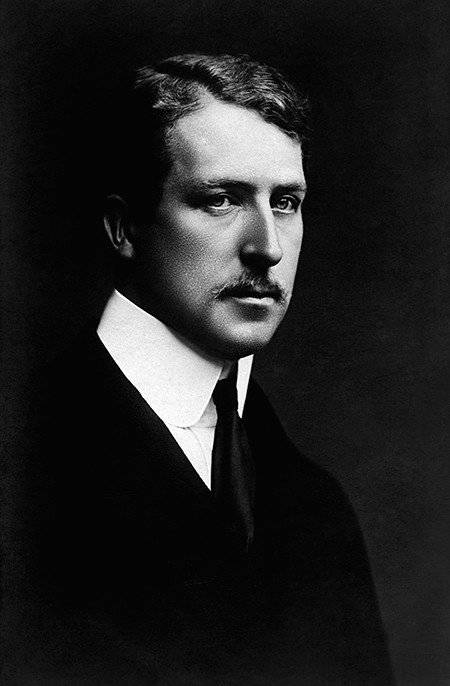
Belgian King Albert I
The invasion of German troops in Belgium. Sturm of Liege
4 August German troops crossed the German-Belgian border and invaded Belgium. The first clashes between the German cavalry and the 12-th infantry brigade of the Belgian army occurred. The German command attached great importance to the Meuse crossings, which were protected by the strong fortress of Liege. It also housed an important railway junction. However, on the move the Belgian fortress could not be taken. I had to prepare for the assault on Liege.
The consolidated cavalry division of Garnier (from the 2 and 4 divisions of the 2 cavalry corps) with the 34 infantry brigade, which was advancing on the right flank of the group, could not take the Viese crossing and provide an attack to Liege from this direction. The detachment could not break through the Meuse. Infantry units took to the line Mortru, Eulemon, Herve, Soiron. On the left flank of the 9-I cavalry division reached only the river. Urty, where she took the crossing from Pulsera. At night, German troops advanced a few more. The advancement of all the German units was strongly delayed by the barriers set up by the Belgians on the roads. Thus, in order to continue the offensive through Belgium to France, it was necessary to take Liege by storm.
The fortress was well fortified, its length reached 50 km. The basis of the defense was the 12 main forts (six large and six small) and 12 intermediate. In the city itself was a citadel. Each fort in itself was a strong fortress with reinforced concrete fortifications, underground casemates, deep moats, searchlights on observation towers, guns (including rapid-fire cannons) and machine guns. The forts were located on both banks of the Meuse at a distance of several kilometers from the city. The main buildings of the forts were located underground, on the surface was a mound with towers. The buildings of the forts were protected by concrete, the artillery was covered with armor. Six large forts (Pontiss, Barshon, Fleron, Bonzell, Flemalle and Loncin), as well as six small (Lierse, Evenier, Chaudfontaine, Embur, Ollon-Hollon and Lantin) had a total of about 400 guns. The main caliber was 210-mm howitzers. In addition, the fortifications were equipped with 120-200-mm guns, 57-mm anti-storm guns. The defense of large forts was carried out by garrisons of 400 soldiers, small fortifications were about 100 people.
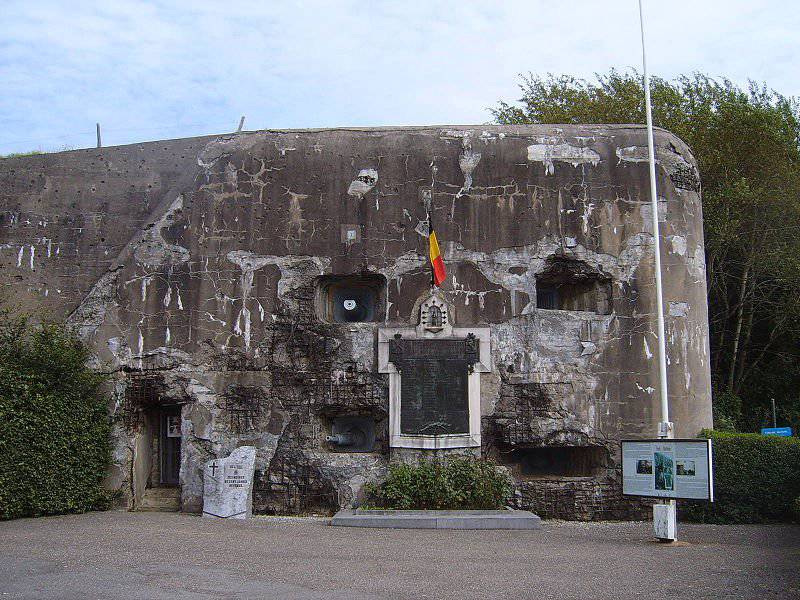
One of the forts of Liege
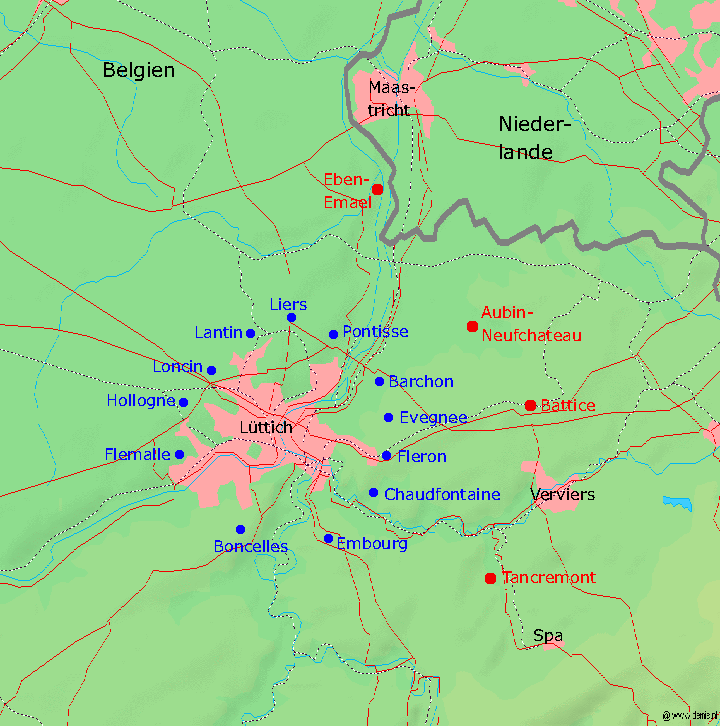
Forts of Liege. Source: Wikipedia
The fortress garrison consisted of 12 fortress infantry battalions, 3 artillery regiments, and an engineering battalion. He was reinforced by the 3 Infantry Division under the command of Lieutenant General Gerard Lehmann (he also became commandant of the fortress). In total, there were about 36 thousand soldiers and officers in the area of Liege. The rest of the Belgian troops were late to reach the line r. Maas. They built positions in Brussels and on the river. JET. General Lehman reinforced the garrisons of the right-bank forts with the 14 brigade of the 3 division (there were two infantry regiments each in brigades and 3 artillery batteries), leaving 9, 11 and 12 brigades in total reserve at Fort Shart.
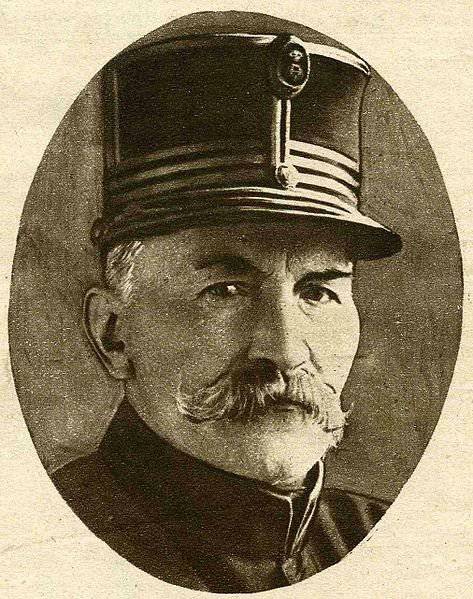
Commandant of Liege Gerard Lehman
Forts of Liege could withstand a direct attack. The fortress had sufficient garrison and reserves for a long defense. According to the experience of Port Arthur, which lasted 9 months, military experts then believed that the fort of Liège would beat this record or be completely impregnable. However, the problem was that the long-term reinforced concrete structures of the fortress had to reinforce the field defense. Before the beginning of the war, the unfortified spaces between the forts planned to strengthen and transform Liege into a single fortified area. Work on the creation of trenches between the forts began only on August 2 and was not completed. They did not have time to build a full-fledged field defense. Work on the demolition of houses and deforestation (for a better view when shooting and destroying shelters for enemy infantry) were also not completed in the assumption. The predpole, rugged by deep ravines and intact buildings of local residents, improved the offensive capabilities of the German troops. In addition, it is worth noting the weak combat capability of the part of the Belgian troops. Thus, the garrison of the fortress almost entirely consisted of reservists of older ages; there was not enough command personnel.
The German grouping (Maaska army) was sent to capture Liege under the command of Otto von Emmich, commander of the 10 corps. Before the offensive, it was concentrated in the areas of Aachen, Eupen, Malmedy, and Lineville. The Maa army consisted of six reinforced infantry brigades (11-I, 14-I, 27-I, 34-I, 38-I and 43-I), 25-th Infantry Regiment of the 1 and 2-I armies, 2 Cavalry Corps (2-I, 4-I and 9-Cavalry Divisions) under the command of General Georg von der Marwitz. Each brigade had 6-7 battalions, 1 squadron and 3 field batteries. In total, the grouping included 33 thousand bayonets and sabers with 124 guns (including 4 heavy mortars). Later it was strengthened.
In the evening of August 5 1914, after artillery preparation, the German troops launched an assault on Liege. The German command hoped to take the fortress with one powerful and quick attack. The troops had to break through the chain of forts, seize the city and all communications. The Belgian forts practically did not suffer from artillery fire. The return fire of the Belgian guns and machine guns was literally mowed down by advanced German units that tried to break through in the intervals between the forts. German troops bravely went to death, under cover of mountains from their corpses and wounded, they nevertheless in some places crept up to the front slopes of the fortifications, but here they were met by a murderous rifle-and-machine-gun fire.
Despite the fact that the German military thought was then considered advanced, the German commanders attacked according to the old method, they walked in tight rows, which caused great losses. As a Belgian officer recalled: “They didn’t even try to disperse, they fell on each other, forming a terrible barricade of the dead and wounded. We even began to fear that it would close our review and that we would not be able to conduct aimed fire. The mountain of corpses has already become huge, and we thought whether to shoot directly at her or go out and take away the corpses ourselves. Believe it or not, this real wall of the dead and dying allowed the Germans to creep closer and rush to the front slopes of the forts, but they did not manage to run half the way - our machine guns and rifles swept them away at once. Of course, we also suffered losses, but they were insignificant compared to the slaughter we committed to the enemy. ”
The Belgians fought off the first attack as planned. All Belgium rejoiced - victory! Hot heads even offered to go to the counter-offensive and complete the rout of the enemy. But the joy was premature. The representative of the General Staff, Erich Ludendorff, attached to the Maaa army, took countermeasures that turned the tide of battle. Ludendorff was considered in Germany one of the most talented strategists. But Ludendorff was "too young" (49 years), and was of "low" origin (grew up on a small farm). In addition, he was disliked because of his uncompromising character and the commander was "banished" to the front, having appointed the deputy chief of staff of the 2 German Army under the command of Karl von Bülow. Even before the war, Ludendorff visited Liege and developed a plan for a quick assault on this fortress. Rising at the head of the 14 Brigade, the commander of which Major General von Wussow was killed, Ludendorff did not give the troops a breather, and continued the assault of Liege.
On the night of 5 on 6 of August, German troops launched a new offensive. On the left flank, the Belgian forces repulsed an attack by the combined 38 and 43 German brigades, advancing between the Urtau and Meuse rivers. The German units were in disarray, the Belgians recaptured the village of Ugra and by the evening of 6 threw the Germans into the region of Ene, Sprimon. The offensive in the center of the 11 of the German Brigade also failed, the Germans retreated to Meunier. On the right flank of the 27, the German brigade was stopped by the Belgians near the villages of Sherat and Vandra. Parts of the 34 Brigade, which late August 5 crossed the Meuse at Wiese, engaged in a hard battle at Gerstahl. The Belgians pulled up reinforcements and drove the Germans back to Liksu. True, these successes led to the exhaustion of a reserve of field troops concentrated at Chartreuse.
Only the 14 Brigade, under the command of Ludendorff, broke through the ring of forts and went to the central fort of Chartreuse. The Belgians did not counterattack, and by noon 6 of August abandoned Chartreuse. German parliamentarians offered to surrender the city, but returned with refusal. The Germans began shelling the city. Thus, the German troops penetrated the center of the Liege fortified area, and the belt of the forts remained in the hands of the Belgians. The Belgian command, in spite of the fact that the Germans achieved success only in one direction, ordered to clear the city and transfer the defenses to the line of the western forts of Lanten and Hollon. The field troops led off to the left bank of the Maaas River, on the right bank only weak garrisons of the forts were left, who were not able to stop the German offensive themselves and were doomed to death while pulling up the siege artillery. The Germans did not intend to storm the forts.
7 August German troops occupied Liege. The Belgians did not destroy the crossing, the Germans captured them. Ludendorff drove to the central citadel, thinking that the Belgians had left her and almost fell into the trap. There was a garrison. The general did not lose his head, began to bang on the goal and demanded to surrender. The citadel capitulated to one Ludendorff and his party. Thus, in general, the task of taking Liege was solved in two days.
After that, the German troops consistently took all the forts. The commander of 2 of the German army, von Bülow, with the aim of quickly mastering the forts and establishing the transfer of troops through the Meuse, sent additional forces with heavy artillery to the Liege direction. For this, troops from the 7, 9 and 10 corps with heavy artillery under the overall command of the commander of the 7 corps, General Einem, were allocated. The Maa army almost doubled in number. Among the heavy guns were "assassins of forts" in 305- and 420-mm caliber and 16 mortars in 210-mm caliber, as well as long-range guns and heavy mortars.
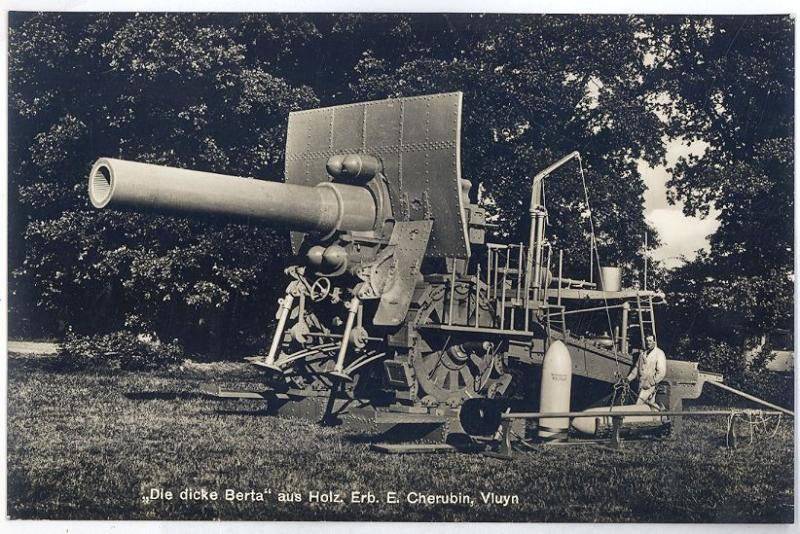
420-mm "Berta"
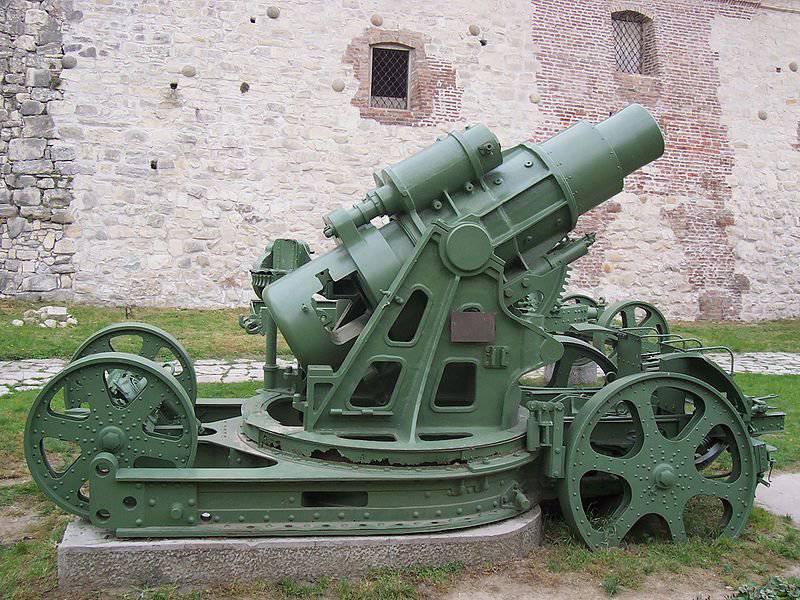
305 mm Mortar Skoda 1911 model year
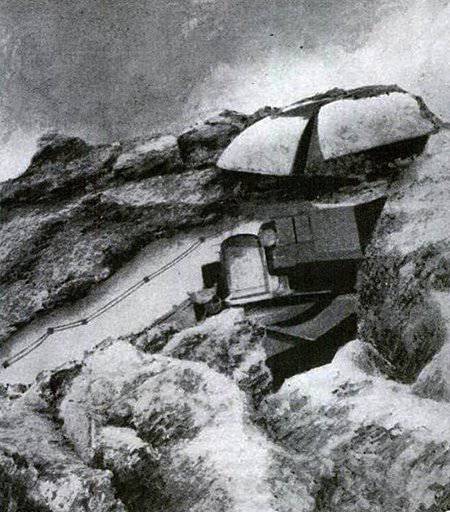
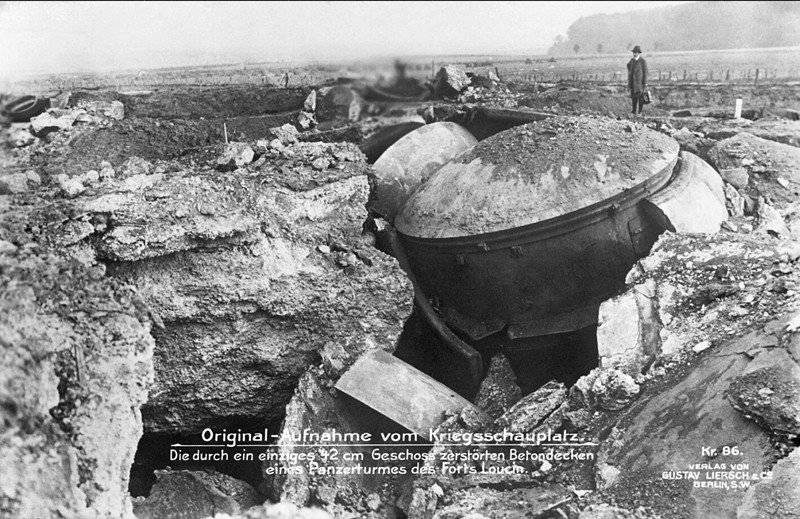
Wreckage of Liege Fort
Against the giant guns of the Škoda brand in 305-mm caliber and Krupp in 420-mm caliber, Belgian forts had no chance. The guns were transported in several sections, having their own engines or teams of several dozen horses. The artillery system served up to 200 gunners, the Skoda projectile weighed 384 kg, the German “Big Bertha” to 900 kg. The shot was made using electrozapala. The gunners moved away from the gun at a distance of about 300 meters, lay down on the ground and covered their ears, eyes and mouths with special bandages. "Assassins of forts" fired armor-piercing projectiles, from which two-meter floors of steel and concrete did not save. Two mortars per day broke the fort. They were taken alternately, focusing shelling on some, then on others. The Barshon and Evenier forts fell to 11 in August, the forts Pontess, Chaudfontaine and Embur forts in August 13 and the Fleron and Liers forts in August 14. Then heavy artillery was thrown against the forts of Lonsen and Lantin. 15-16 August fell the last Belgian forts - Bonzell, Lantin, Hollon and Flemle. The commander of the defense of Liege, General Lehmann was wounded during the shelling and unconscious was captured in Fort Lonsin.
Thus, after August 16, the German army finally opened its way to France. The German army lost about 25 thousand people killed and wounded during the storming of the fortress. The loss of the Belgian army - about 15 thousand people killed, wounded and captured. From a military point of view, the assault on Liege put an end to the theory that, a powerful fortress can withstand a modern army with heavy artillery. The attack was stronger than defense. The fortresses that seemed impregnable forts quickly fell under the blows of the “Forts assassins”. From a strategic point of view, the storming of the forts of Liege detained German troops until August 16, which affected the overall operational situation. The reports from the Liège region opened the French command to the situation in Belgium, and the advance of the German forces behind the Meuse directed the French to the fact that the Germans' attack through Belgium was already a reality that could not be ignored. True, the French poorly used this delay.
Source of maps: Kolenkovsky A. Maneuvering period of the first world imperialist war 1914 M., 1940
Fall of belgium
The Belgian king Albert appealed for help to the allies. But the British were just sending troops to France. And the French command stubbornly clung to the hope that the Belgians were fighting only with the German "barriers" and the German army would go on the offensive from the Alsace-Lorraine region. The French commander Joseph Joffre enthusiastically prepared for his offensive and only a few moved the army to the north. The first battles took place on the border.
In Belgium, the 6 of August was sent only to the Sorde Cavalry Corps (three divisions), more for moral support than for real help. The French cavalry made a "Napoleon" throw, after three days passing 180 km. People and horses were extremely tired, because of the heat, some of the horses fell (for the sake of speed, halts were reduced, they did not water the horses). The French went to Liege, suffered some losses from the fire of the German infantry and, without finding out anything, moved away. 13 August moved forward again, met the Germans and retreated. As a result, the large forces of the French cavalry sped aimlessly between the rivers Urta and the Meuse; no serious information was obtained about the enemy, they suffered losses in personal and equestrian composition without any benefit.
The remnants of the Liege garrison and the 3 Infantry Division were relegated to the main forces of the Belgian army. Belgian troops deployed August 10 on the Zheta and Dil rivers on the 30 km front, having a cavalry division on the left flank. The 4 Infantry Division stood at the strong Namur fortress, which also had high hopes. The Belgian command was planned to be held up on this frontier of the enemy until French troops, who were waiting from Namur, did not come to the rescue. The Belgian press still continued to believe in victory. When the German cavalry ran into the Belgian position on the river. Zhet, she mowed down with fire. The Belgian newspapers exulted, wrote about the "decisive battle of the war", "the final retreat of the German cavalry."
The 1 th von Kluck's German army (Kluka) moved to Brussels on August 12. To her left, the BNULA 2-I army moved to the French border, the Gausen 3-I army advanced to the south. The abandonment of the Belgian troops on the Dil and Jette rivers was inexpedient after the fall of Liege. The weak Belgian army could not withstand the blow of the German corps. The Belgians should have made contact with the French and British troops. Most of the country would have to leave, but the army would have been saved. However, the Belgians took the fight. By August 18, the advancing German forces and the Belgian army began fighting. The first German attacks were repulsed, but the commander of the Belgian army, King Albert, saw that the forces were not equal and began to withdraw troops.
As a result, the weak Belgian army was driven back across the River Diel and began to retreat to Antwerp. 20 August fell to Brussels. In Brussels, the Germans imposed a contribution of 500 million francs. The powerful Namur fortress was in the German rear. Siege guns were brought from Namur to Liege. The siege of the fortress carried 11 th Army and Guards Reserve Corps. 23 August bombing began. The siege was still loose and the Belgian units, unable to withstand the monstrous shelling, began to leave the fortress. 25 August Namur fell. Almost 30-th. the garrison of the fortress dispersed. However, the liberated German corps (11 and Guards Reserve) did not return to their armies. Both corps received orders to load into echelons and follow to Prussia, on the Eastern Front, where 8-th German army von Pritvice suffered a defeat at Gumbmnnen (Gumbinnen-Goldap battle 7 (20) August 1914 g.). In addition, the 5 Corps was detained in the Metz area and two new corps were retargeted to the Oriental Theater, which were formed in Germany and planned to be sent to France.
German troops tried to encircle and destroy the Belgian army, but they managed to hide in Antwerp. Antwerp was protected from all sides by several dozen small forts and fortifications, had two defensive lines. The city defended 147-th. army and garrison. The siege was not complete, the German troops blocked Antwerp only from the east and south. In the north, the city bordered on neutral Holland, from the west (the sea), England could provide assistance.
Antwerp besieged the 3 of the German reserve corps. The main forces of the German army were connected by battles in France, and heavy artillery operated there as well. Therefore, the siege was delayed until the beginning of October 1914 g. Heavy artillery appeared only in late September. Antwerp was doomed. The first shelling brought serious results, in early October, German troops captured several forts. Fortifications died one after another, the bombing of the city led to the destruction of entire streets. The British deployed reinforcements, but they could not change the situation. The Belgian army began to evacuate from the city. Part of the Belgian and British soldiers fled to the Netherlands, where they were interned. Others on the ships were taken to England and France. The Belgian government moved to Le Havre. The remnants of the Belgian army (about 50 thousand people) occupied a small area of the Belgian territory (Ypres region), which was not occupied by German troops. They took positions on the River Isere from Ypres to the seashore.
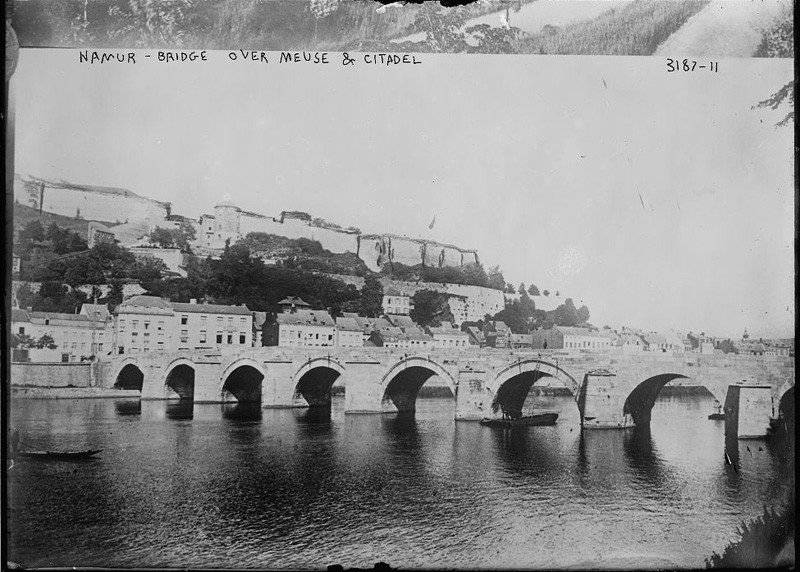
Fort Namur
To be continued ...
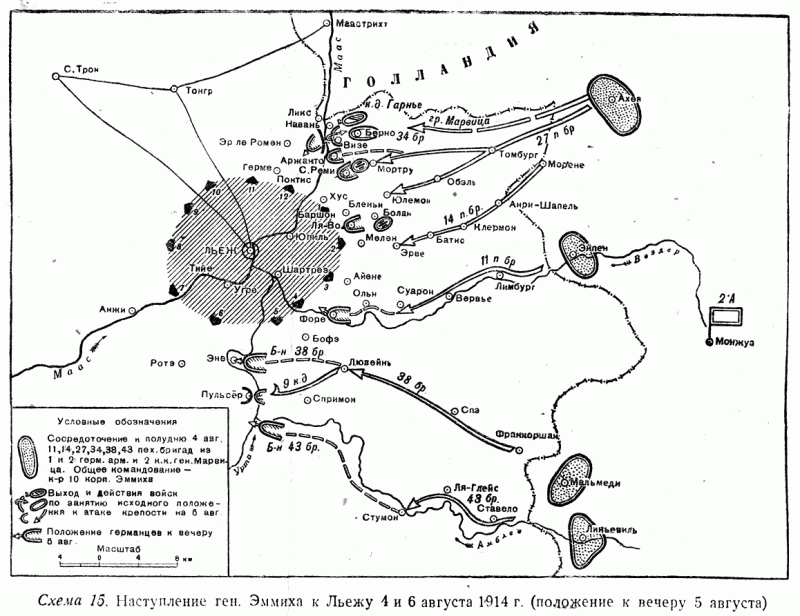
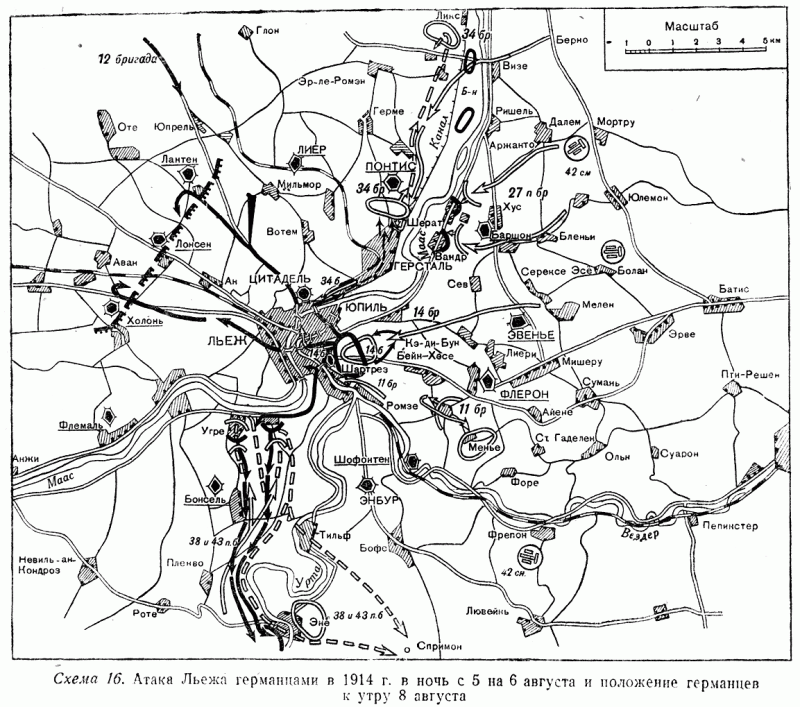
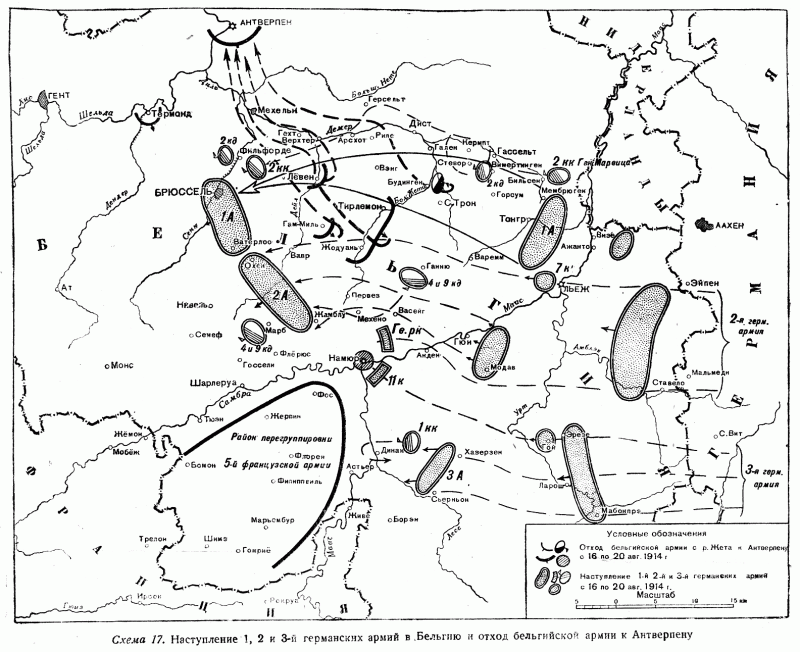
Information